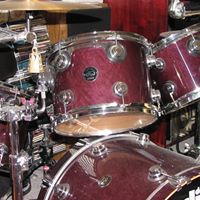Keith J Novak
age ~78
from Buffalo Grove, IL
- Also known as:
-
- Keith Um Novak
- Keith R Novak
- Keith J Novack
- Phone and address:
-
1171 Bristol Ln, Buffalo Grove, IL 60089
8477930245
Keith Novak Phones & Addresses
- 1171 Bristol Ln, Buffalo Grove, IL 60089 • 8477930245
- 1544 Saint Marks Pl, Palatine, IL 60067 • 8473594675
- 672 E Constitution Dr APT 6, Palatine, IL 60074 • 8474718111
- 672 Constitution Dr, Palatine, IL 60074
- 7146 Laurel Cherry Dr, Rockford, IL 61108 • 8153980320
- Seattle, WA
- Arlington Heights, IL
Work
-
Company:Novak, keith
-
Address:7146 Laurel Cherry Dr, Rockford, IL 61108
-
Phones:8153980320
-
Position:Ceo
-
Industries:Electronic Components
Specialities
Purchase Loan • Refinancing • Home Equity
Resumes

Keith Novak
view source
Keith Novak
view source
Keith Novak
view source
Keith Novak
view source
Keith Novak
view source
Keith Novak
view sourceLicense Records
Keith Novak
License #:
2705101311 - Active
Category:
Contractor
Issued Date:
Nov 28, 2005
Expiration Date:
Nov 30, 2017
Type:
Class B
Us Patents
-
Integrated Window Belt System For Aircraft Cabins
view source -
US Patent:7118069, Oct 10, 2006
-
Filed:Dec 2, 2004
-
Appl. No.:11/002605
-
Inventors:Keith H. Novak - Shoreline WA, US
Robert W. Mumm - Everett WA, US
Karen L. Hills - Everett WA, US
Joe S. Wong - Bellevue WA, US
Shawn M. Pare - Woodinville WA, US
Julia W. Miller - Lake Stevens WA, US
Art Waidner - Everett WA, US -
Assignee:The Boeing Company - Chicago IL
-
International Classification:B64C 1/14
-
US Classification:244119, 2441293
-
Abstract:A system and a method is provided for fitting an aircraft cabin with modular sidewall panels, window reveals, and foam insulation blocks in an integrated manner. The system comprises a sidewall panel which may have one or more openings therethrough to receive a window reveal held by snap-fit fastenings. The bezel of the window reveal may be held by snap-fit fasteners for easy removal to allow removal and cleaning of the inner dust cover disassembly of the sidewall panel. Foam insulation blocks may be molded to fit in the cavity between the outer wall of the aircraft and the sidewall panels, held in place by compressive pressure between the frames of the airframe. The outer extent of the window reveal is tapered inwardly to guide the window reveal to mating contact with an outer window assembly in the aircraft fuselage without further adjustment of the sidewall panel.
-
Reconfigurable Interior Sidewall
view source -
US Patent:7210655, May 1, 2007
-
Filed:Dec 3, 2004
-
Appl. No.:11/004292
-
Inventors:Keith H. Novak - Shoreline WA, US
Peter S. Guard - Sammamish WA, US
David A. Young - Seattle WA, US -
Assignee:The Boeing Company - Chicago IL
-
International Classification:B64C 1/00
-
US Classification:244119
-
Abstract:A reconfigurable interior sidewall system includes one or more simply curved sidewall panels, each curved around the fuselage but longitudinally linear and providing a consistent mating surface for monuments. Panel openings are provided in each panel so that inner window assemblies may be installed for opposing structural windows, each inner window assembly having outward sculpturing for additional cabin room. A cover plate is also provided for flush insertion into the opening to fill the opening when it is not needed and to provide a constant profile for cabin monuments whenever the layout of the cabin changes. This results in the production of fewer parts as well as facilitating faster and less expensive interior reconfigurations.
-
Pivoting Storage Bin And Method Of Making
view source -
US Patent:7234666, Jun 26, 2007
-
Filed:Mar 2, 2005
-
Appl. No.:11/070521
-
Inventors:Keith H. Novak - Shoreline WA, US
Roberto T Valdez - Renton WA, US
Brent C Walton - Renton WA, US -
Assignee:The Boeing Company - Chicago IL
-
International Classification:B64D 11/00
-
US Classification:2441185
-
Abstract:A storage bin system for holding luggage or the like has an upper shroud portion secured to a supporting structure and a cooperating lower bucket defining a storage space for items. The lower bucket pivots downwardly to open and has a curved front face with curved inner and outer surfaces. A latch handle is centrally mounted in the front surface and operatively connected to a latch operating mechanism secured to the inner surface. A flat bottom plate is removably mounted on the curved inners surface, covering the latch operating mechanism to from a flat surface to support items inserted into the storage space. A number of the storage bin systems are mounted on opposite sides of a passenger cabin of a single aisle aircraft to provide a cleaner, open passenger cabin look.
-
Translucent, Flame Resistant Composite Materials
view source -
US Patent:8007620, Aug 30, 2011
-
Filed:Oct 12, 2009
-
Appl. No.:12/577618
-
Inventors:Daniel W. Cushing - Covington WA, US
Eugene A. Jackson - Renton WA, US
Keith H. Novak - Shoreline WA, US
David N. Dunn - Marysville WA, US
Gregory R. Bell - Renton WA, US -
Assignee:The Boeing Company - Chicago IL
-
International Classification:B29C 65/18
B32B 27/04
B32B 27/12 -
US Classification:156245, 1563082, 156311, 156312
-
Abstract:A translucent composite material that can be used in various airplane interior applications that allows sufficient light transmissivity while preferably meeting Federal Aviation Administration (FAA) flammability requirements for overhead materials in the cabin of a commercial aircraft. The material also meets FAA standards regarding vertical burn, smoke emissions tests, and toxic fume emissions tests. The composite material is formed by laminating long glass fibers and (PPSU) into a composite sheet under controlled heat and pressure. The composite sheet is then cut, bent or thermoformed to form the desired part. The parts formed are available for a wide variety of uses within the passenger cabin of a commercial aircraft. The long glass fibers may be unidirectional or weaved into a glass cloth like material. While preferably formed for airplane interior applications, these components may also be used in other aerospace or non-aerospace applications.
-
Translucent, Flame Resistant Composite Materials
view source -
US Patent:20050142968, Jun 30, 2005
-
Filed:Dec 24, 2003
-
Appl. No.:10/707612
-
Inventors:Daniel Cushing - Covington WA, US
Eugene Jackson - Renton WA, US
Keith Novak - Shoreline WA, US
David Dunn - Marysville WA, US
Gregory Bell - Renton WA, US -
Assignee:THE BOEING COMPANY - Chicago IL
-
International Classification:B32B017/04
-
US Classification:442136000, 442180000, 442239000, 442301000, 427164000, 427372200, 427374100
-
Abstract:A translucent composite material that can be used in various airplane interior applications that allows sufficient light transmissivity while preferably meeting Federal Aviation Administration (FAA) flammability requirements for overhead materials in the cabin of a commercial aircraft. The material also meets FAA standards regarding vertical burn, smoke emissions tests, and toxic fume emissions tests. The composite material is formed by laminating long glass fibers and (PPSU) into a composite sheet under controlled heat and pressure. The composite sheet is then cut, bent or thermoformed to form the desired part. The parts formed are available for a wide variety of uses within the passenger cabin of a commercial aircraft. The long glass fibers may be unidirectional or weaved into a glass cloth like material. While preferably formed for airplane interior applications, these components may also be used in other aerospace or non-aerospace applications.
-
Translucent, Flame Resistant Composite Materials
view source -
US Patent:20120156440, Jun 21, 2012
-
Filed:Mar 15, 2011
-
Appl. No.:13/048704
-
Inventors:Daniel W. Cushing - Covington WA, US
Eugene A. Jackson - Deer Park WA, US
Keith H. Novak - Tukwila WA, US
David N. Dunn - Marysville WA, US
Gregory R. Bell - Renton WA, US -
Assignee:THE BOEING COMPANY - Chicago IL
-
International Classification:B32B 3/00
B32B 7/02
B32B 5/26
D04H 13/00 -
US Classification:4281951, 442416, 428212, 442391
-
Abstract:A translucent composite material comprises a substrate and a plurality of glass fibers embedded within the substrate. The substrate may comprise a substantially continuous nonwoven, non-fabric, translucent thermoplastic polyphenylsulfone substrate. The plurality of glass fibers may substantially span across a length of the substrate and may have an orientation, a fiber thickness, and a fiber area density selected to provide the translucent composite material with a strength, a flame-resistance, and a light transmissivity.
-
Shock Insulated Container For Hard Disk Drives
view source -
US Patent:58379347, Nov 17, 1998
-
Filed:Dec 2, 1996
-
Appl. No.:8/759071
-
Inventors:Theodore N. Valavanis - Waukegan IL
Keith A. Novak - Cicero IL -
Assignee:Midway Games Inc. - Chicago IL
-
International Classification:H02G 308
-
US Classification:174 521
-
Abstract:A shock insulated container for a disk drive features a plastic enclosure having a top hingedely secured to a bottom. The enclosure is formed of anti-static materials. A foam liner is provided to surround the hard drive. The drive and liner are encapsulated in the container, which is secured, using press fit projections. The package may then be mounted to a commercial type video game machine.
Name / Title
Company / Classification
Phones & Addresses
Partner
CliftonLarsonAllen LLP
Accountants - Certified Public. Litigation Support. Taxes - Consultants & Representatives. Tax Return Preparation. Executive Search Consultants. Business Consultants. Accounting Services. Accounting - Forensic. Accountants. Risk Management
Accountants - Certified Public. Litigation Support. Taxes - Consultants & Representatives. Tax Return Preparation. Executive Search Consultants. Business Consultants. Accounting Services. Accounting - Forensic. Accountants. Risk Management
9515 Deereco Rd Ste 500, Timonium Corporate Center, Timonium, MD 21093-2184
4104530900, 4104530914
4104530900, 4104530914
CEO
Novak, Keith
Electronic Components
Electronic Components
7146 Laurel Cherry Dr, Rockford, IL 61108
Principal
Monarch Tech Corp
Business Services at Non-Commercial Site
Business Services at Non-Commercial Site
441 New York Ln, Elk Grove Vlg, IL 60007
Director
Oceanside Manager Incorporated
Mylife
Classmates

Keith Novak
view sourceSchools:
Univeristy of New Hampshire Durham NH 1991-1995
Community:
Sandra Anthony, Judith Vreeland, Bill Jr, Ellen Puglisi

Keith Novak
view sourceSchools:
St. Leo the Great School Lincroft NJ 1979-1987
Community:
Renee Frotton, Christy Interdonati, Lisa Burbank, Matt Baker, John Dorko, Eddie Boudakian, John Driscoll, Jon Fisher, Rasheda Worth, Robin Hermida

Keith Novak
view sourceSchools:
Orr High School Orr MN 1968-1972
Community:
Merrilee Nelson, Dale Ruikka, Dorie Hoffman, Victoria Holmes, James Namchek, Faye Boney, Colleen Radle, Wendy Salmi, Paulette Norton, Carole Salmi

St. Leo the Great School,...
view sourceGraduates:
Keith Novak (1979-1987),
Mike del Vecchio (1983-1987),
Allyson Coppola (1983-1987),
Tara Avallone (1986-1993)
Mike del Vecchio (1983-1987),
Allyson Coppola (1983-1987),
Tara Avallone (1986-1993)

Univeristy of New Hampshi...
view sourceGraduates:
Keith Novak (1991-1995),
Peter Obrien (1973-1977),
Allison Scott (1988-1992),
Andrew Albright (1988-1991),
Matthew Romano (1999-2003)
Peter Obrien (1973-1977),
Allison Scott (1988-1992),
Andrew Albright (1988-1991),
Matthew Romano (1999-2003)

keith novak | Class of 19...
view source
Keith Novak | Class of 20...
view source
Torie Novak Keith | Class...
view sourceYoutube
Myspace
Googleplus

Keith Novak
Work:
Energy Automation Services - Owner
About:
Heating - Air Conditioning - Building Automation Contractor. Industrial CNC Servo System Design Installation and Service
Tagline:
Energy Automation Services

Keith Novak
view source
Keith Novak
view source
Keith Novak
view source
Keith Novak
view source
Keith Novak
view source
Keith Novak
view source
Keith Novak
view source
Keith Novak
view sourceFlickr
News

Feds: Ex-soldier stole military IDs for militia
view source- She said she got to know Keith Novak when he walked the dog. She last saw him in the summer of 2012, when he was running and carrying a heavy backpack that he told her weighed anywhere from 60 to 80 pounds.
- Date: Dec 12, 2013
- Category: U.S.
- Source: Google
Get Report for Keith J Novak from Buffalo Grove, IL, age ~78













